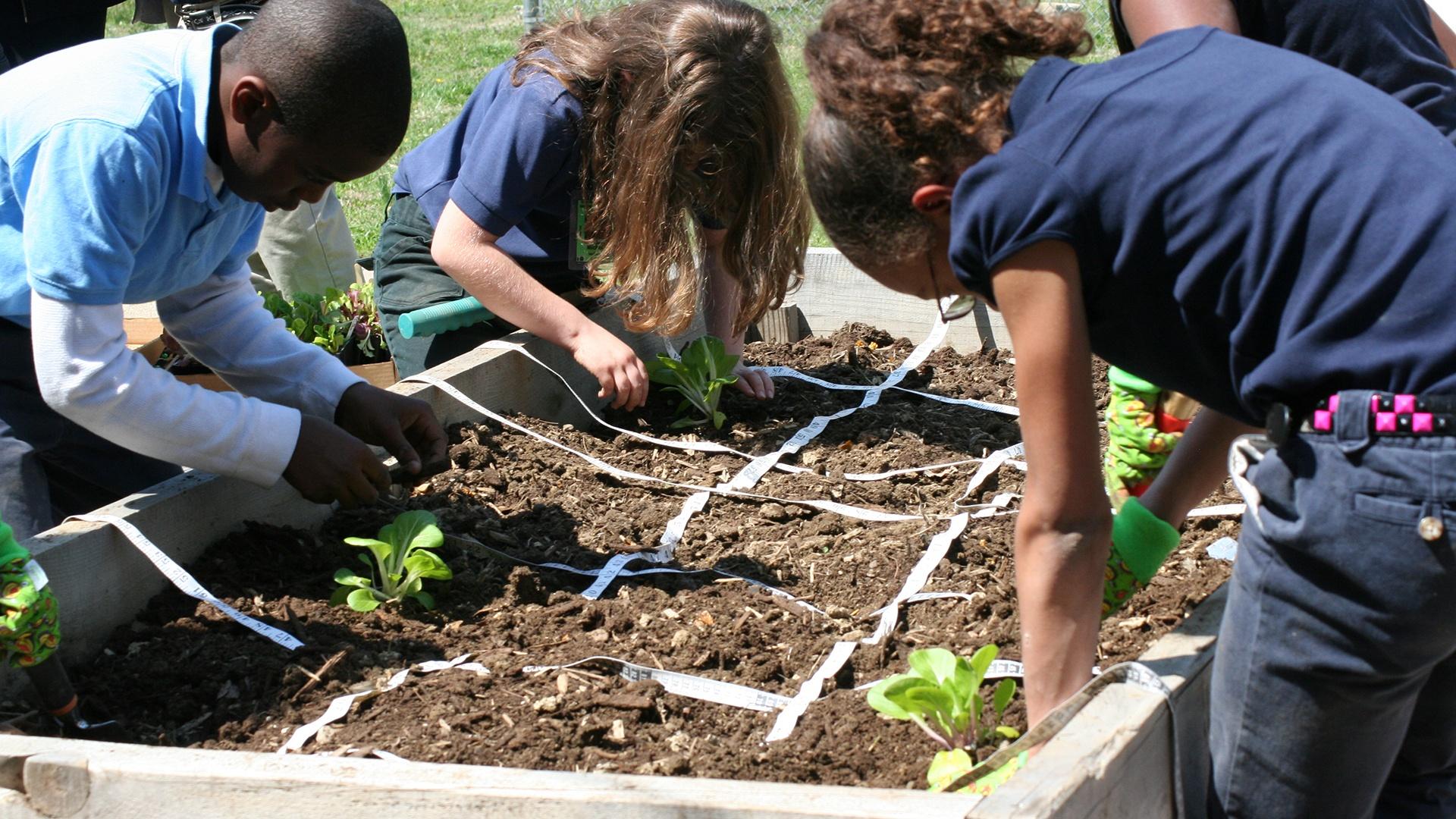
Introduction: Why Sustainable Landscape Maintenance Matters
In today’s world, the call for environmental responsibility echoes louder than ever. From reducing our carbon footprint to preserving biodiversity, sustainability has become a crucial consideration across all sectors. Landscape maintenance, often overlooked, plays a significant role in this movement. Sustainable landscape maintenance services are no longer a niche trend but a necessary shift towards preserving our planet for future generations.
Traditional landscaping practices often rely on chemical fertilizers, pesticides, and excessive water usage, contributing to soil degradation, water pollution, and habitat loss. Sustainable landscape maintenance, on the other hand, adopts an eco-conscious approach, minimizing environmental impact while promoting healthy, thriving landscapes.
This comprehensive guide delves into the world of sustainable landscape maintenance services, exploring their benefits, key practices, and how you can incorporate them into your own property or business.
Understanding the Core Principles of Sustainable Landscaping
Sustainable landscaping isn’t just about using organic products; it’s a holistic approach that considers the entire ecosystem. It revolves around several core principles:
* **Soil Health:** Healthy soil is the foundation of a thriving landscape. Sustainable practices focus on improving soil structure, fertility, and microbial activity through composting, cover cropping, and avoiding harmful chemicals.
* **Water Conservation:** Water is a precious resource, and sustainable landscaping prioritizes its efficient use. Techniques like rainwater harvesting, drip irrigation, and drought-tolerant plant selection minimize water waste.
* **Integrated Pest Management (IPM):** IPM focuses on preventing pest problems through natural methods rather than relying solely on chemical pesticides. This involves monitoring pest populations, promoting beneficial insects, and using targeted treatments when necessary.
* **Native Plant Selection:** Native plants are adapted to the local climate and soil conditions, requiring less water, fertilizer, and pest control. They also provide valuable habitat for native wildlife.
* **Waste Reduction:** Sustainable landscaping minimizes waste by composting yard debris, recycling materials, and using durable, long-lasting products.
* **Pollution Prevention:** Avoiding the use of synthetic fertilizers and pesticides protects water sources and reduces air pollution.
* **Energy Conservation:** Using energy-efficient equipment and reducing lawn size can significantly lower energy consumption.
The Benefits of Choosing Sustainable Landscape Maintenance
Switching to sustainable landscape maintenance services offers a multitude of benefits, both for the environment and for you.
* **Environmental Protection:** This is perhaps the most significant benefit. Sustainable practices reduce pollution, conserve water, protect biodiversity, and promote healthy ecosystems.
* **Cost Savings:** While the initial investment in sustainable practices might be slightly higher, the long-term cost savings can be substantial. Reduced water usage, less fertilizer application, and lower pest control costs can significantly lower your overall expenses.
* **Improved Soil Health:** Healthy soil leads to healthier plants, reducing the need for fertilizers and pesticides. It also improves water retention and drainage.
* **Enhanced Property Value:** A well-maintained, sustainable landscape can increase your property value and attract environmentally conscious buyers.
* **Healthier Living Environment:** By eliminating harmful chemicals, sustainable landscaping creates a safer and healthier environment for your family, pets, and the community.
* **Positive Public Image:** For businesses, adopting sustainable landscaping practices can enhance their public image and demonstrate their commitment to environmental responsibility.
* **Support for Local Ecosystems:** Native plants support local wildlife populations, providing food and shelter for birds, insects, and other animals.
Key Practices in Sustainable Landscape Maintenance
Sustainable landscape maintenance encompasses a wide range of practices, each contributing to a healthier and more environmentally friendly landscape.
1. Soil Management: The Foundation of a Healthy Landscape
* **Composting:** Composting is the process of breaking down organic matter, such as leaves, grass clippings, and food scraps, into a nutrient-rich soil amendment. Adding compost to your soil improves its structure, fertility, and water retention.
* **Cover Cropping:** Planting cover crops, such as legumes or grasses, can improve soil health by adding organic matter, suppressing weeds, and preventing erosion. Cover crops are typically planted in the off-season and tilled into the soil before planting other crops.
* **Soil Testing:** Regular soil testing can help you determine the nutrient levels in your soil and identify any deficiencies. This allows you to apply fertilizers only when needed, reducing the risk of over-fertilization and nutrient runoff.
* **Avoid Compaction:** Soil compaction can restrict root growth and water infiltration. Avoid walking or driving heavy equipment on your lawn or garden, especially when the soil is wet. Aerating your lawn can help alleviate compaction.
* **Mulching:** Mulching helps retain soil moisture, suppress weeds, and regulate soil temperature. Use organic mulches, such as wood chips, bark, or straw, which will decompose over time and add nutrients to the soil.
2. Water Conservation: Using Water Wisely
* **Rainwater Harvesting:** Collecting rainwater in rain barrels or cisterns can provide a sustainable source of water for irrigation. Rainwater is naturally soft and free of chemicals, making it ideal for plants.
* **Drip Irrigation:** Drip irrigation delivers water directly to the roots of plants, minimizing water waste from evaporation and runoff. It’s particularly effective for vegetable gardens, flower beds, and trees.
* **Smart Irrigation Controllers:** Smart irrigation controllers use weather data and soil moisture sensors to automatically adjust watering schedules, ensuring that plants receive the right amount of water at the right time.
* **Xeriscaping:** Xeriscaping is a landscaping technique that utilizes drought-tolerant plants and water-wise practices to minimize water usage. It’s particularly well-suited for arid and semi-arid climates.
* **Proper Watering Techniques:** Water deeply and less frequently to encourage deep root growth. Water early in the morning to minimize evaporation.
3. Integrated Pest Management (IPM): A Natural Approach to Pest Control
* **Prevention:** The best way to control pests is to prevent them from becoming a problem in the first place. This involves maintaining healthy plants, providing good drainage, and removing potential breeding grounds.
* **Monitoring:** Regularly inspect your plants for signs of pests or diseases. Early detection allows you to take action before the problem becomes severe.
* **Beneficial Insects:** Encourage beneficial insects, such as ladybugs, lacewings, and praying mantises, which prey on common garden pests. You can attract beneficial insects by planting flowers that provide nectar and pollen.
* **Biological Controls:** Use biological controls, such as Bacillus thuringiensis (Bt), to control specific pests. Bt is a naturally occurring bacterium that is toxic to certain insects but harmless to humans, pets, and beneficial insects.
* **Targeted Treatments:** If chemical pesticides are necessary, use them sparingly and only on affected plants. Choose pesticides that are specifically targeted to the pest you’re trying to control and follow the label instructions carefully.
4. Native Plant Selection: Embracing Local Flora
* **Research Native Plants:** Before planting, research the native plants that are well-suited to your local climate and soil conditions. Native plant societies and local nurseries can provide valuable information.
* **Choose the Right Plant for the Right Place:** Consider the amount of sunlight, soil type, and moisture levels when selecting plants. Group plants with similar needs together to make watering and maintenance easier.
* **Benefits of Native Plants:** Native plants require less water, fertilizer, and pest control than non-native plants. They also provide valuable habitat for native wildlife and support local ecosystems.
5. Waste Reduction: Minimizing Environmental Impact
* **Compost Yard Debris:** Compost leaves, grass clippings, and other yard debris to create a valuable soil amendment. Avoid sending yard waste to landfills.
* **Recycle Materials:** Recycle plastic pots, containers, and other landscaping materials whenever possible.
* **Use Durable Products:** Choose durable, long-lasting products for your landscape, such as recycled plastic lumber for decks and fences.
* **Reduce Lawn Size:** Consider reducing the size of your lawn and replacing it with native plants, groundcovers, or other low-maintenance alternatives.
6. Energy Conservation: Reducing Your Carbon Footprint
* **Use Energy-Efficient Equipment:** Choose energy-efficient lawnmowers, trimmers, and other landscaping equipment. Consider using electric or battery-powered equipment instead of gas-powered equipment.
* **Reduce Lawn Size:** Lawns require significant amounts of water, fertilizer, and mowing. Reducing the size of your lawn can significantly lower your energy consumption.
* **Plant Trees for Shade:** Planting trees can provide shade, reducing the need for air conditioning in the summer. Choose native trees that are well-suited to your local climate.
* **Use LED Lighting:** Use LED lighting for your landscape lighting. LED lights are more energy-efficient and longer-lasting than traditional incandescent lights.
Finding the Right Sustainable Landscape Maintenance Services
If you’re looking to transition to sustainable landscape maintenance but don’t have the time or expertise to do it yourself, consider hiring a professional service. Here’s what to look for:
* **Experience and Expertise:** Choose a company with a proven track record of providing sustainable landscape maintenance services. Ask for references and check their online reviews.
* **Certifications:** Look for companies that are certified by organizations such as the Sustainable Sites Initiative (SITES) or the Ecological Landscaping Association (ELA).
* **Knowledge of Sustainable Practices:** Ensure that the company is knowledgeable about sustainable landscaping practices, such as soil management, water conservation, IPM, and native plant selection.
* **Use of Sustainable Products:** Ask about the products they use, such as organic fertilizers, compost, and biological controls.
* **Commitment to Environmental Responsibility:** Choose a company that is committed to environmental responsibility and has a strong track record of sustainable practices.
The Future of Sustainable Landscape Maintenance
The future of landscape maintenance is undoubtedly sustainable. As awareness of environmental issues grows, more and more people are demanding eco-friendly practices. Technological advancements are also playing a role, with the development of more efficient irrigation systems, electric landscaping equipment, and biological pest control methods.
Sustainable landscape maintenance is not just a trend; it’s a fundamental shift towards a more responsible and environmentally conscious approach to managing our landscapes. By adopting sustainable practices, we can create beautiful, healthy, and thriving landscapes that benefit both the environment and our communities.
Making the Switch: A Step-by-Step Guide to Sustainable Landscaping
Ready to embrace sustainable landscaping? Here’s a step-by-step guide to help you get started:
**1. Assess Your Current Landscape:**
* **Evaluate your soil:** Conduct a soil test to determine its pH, nutrient levels, and overall health. This will inform your soil amendment strategies.
* **Analyze water usage:** Monitor your water bills and irrigation practices to identify areas where you can conserve water.
* **Identify pest problems:** Note any recurring pest issues and the methods you currently use to control them.
* **Inventory your plants:** Determine which plants are native, which are non-native, and which are invasive. Assess their water and nutrient requirements.
**2. Develop a Sustainable Landscaping Plan:**
* **Set goals:** Define your objectives for sustainable landscaping. Do you want to reduce water consumption, eliminate pesticide use, or create a wildlife habitat?
* **Choose native plants:** Select native plants that are well-suited to your local climate and soil conditions. Consider their mature size, water needs, and sun exposure requirements.
* **Design for water conservation:** Incorporate water-wise practices, such as rainwater harvesting, drip irrigation, and xeriscaping.
* **Plan for soil improvement:** Develop a composting and mulching strategy to improve soil health and fertility.
* **Implement IPM:** Create a plan for preventing and controlling pests using natural methods.
**3. Implement Sustainable Practices:**
* **Amend your soil:** Add compost, aged manure, or other organic matter to improve soil structure and fertility.
* **Install drip irrigation:** Replace overhead sprinklers with drip irrigation systems to deliver water directly to plant roots.
* **Plant native plants:** Remove non-native and invasive plants and replace them with native species.
* **Mulch your garden beds:** Apply a layer of organic mulch to retain moisture, suppress weeds, and regulate soil temperature.
* **Start composting:** Collect yard waste and food scraps and compost them to create a valuable soil amendment.
* **Practice IPM:** Monitor your plants for pests and diseases and use natural methods to control them.
**4. Maintain Your Sustainable Landscape:**
* **Water deeply and less frequently:** Encourage deep root growth by watering deeply and less often.
* **Fertilize with organic fertilizers:** Use organic fertilizers, such as compost tea or fish emulsion, to provide plants with essential nutrients.
* **Weed regularly:** Remove weeds by hand or with a hoe to prevent them from competing with your plants for resources.
* **Prune plants as needed:** Prune plants to maintain their shape and health.
* **Monitor for pests and diseases:** Regularly inspect your plants for signs of pests or diseases and take action as needed.
Conclusion: Embracing a Sustainable Future
Sustainable landscape maintenance is more than just a trend; it’s a crucial step towards creating a healthier planet. By embracing sustainable practices, we can reduce our environmental impact, conserve resources, and create beautiful, thriving landscapes that benefit both people and the environment. Whether you’re a homeowner, business owner, or landscape professional, there are countless ways to incorporate sustainable practices into your landscape maintenance routine. Let’s work together to cultivate a greener tomorrow, one sustainable landscape at a time.
This guide provides a comprehensive overview of sustainable landscape maintenance services, highlighting their benefits, key practices, and how to implement them. By following these guidelines, you can create a beautiful, healthy, and environmentally friendly landscape that you can be proud of.


